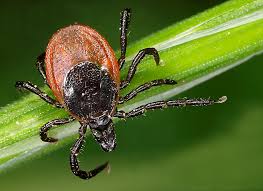As Canadians flock outdoors for hiking, gardening and sunshine this spring, an unwelcome guest is making its seasonal return: ticks.
Ticks are flourishing in more areas of the country than ever before as a result of warmer winters and milder temperatures, increasing the risk of tick-borne diseases like Lyme disease. The majority of Canadian cases of Lyme disease are caused by the black-legged tick, which is rapidly expanding its range to include parts of every southern province. This spread is closely tied to climate change, which allows ticks to survive winter and move into once-too-cold regions, putting more people and pets at risk.
Although there are more than 40 tick species in Canada, the most common one is the black-legged tick, also known as the deer tick, and its numbers are on the rise. These ticks become active once temperatures hit 4 C, and they’ll start looking for a blood meal from animals — or humans.“ The black-legged tick and the western black-legged tick out in the West carry Lyme disease and other diseases. So when we’re bitten by ticks, we’re at risk of acquiring these diseases,” said Dr. Sarah Keating with the Canadian Lyme Disease Foundation.
This is because ticks are really good at spreading disease, she said. They have their own microbiome, just like we do, full of various microorganisms.
When a tick starts feeding, some of these organisms can move into its salivary glands. Then, as the tick injects saliva into our skin to keep the blood flowing and avoid detection, those pathogens can enter our bloodstream and potentially cause disease.
Tick season is back. How to stay safe around these risky bloodsuckers

